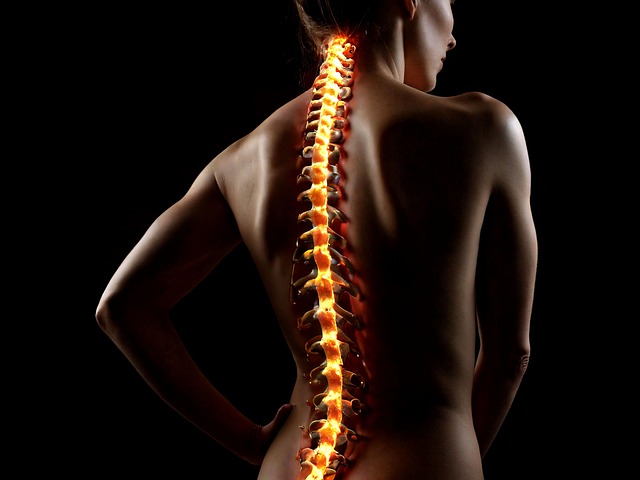Advanced non-invasive body sculpting treatments using technologies like lasers, radiofrequency (RF), HIFU, and electromagnetic muscle stimulation offer safe alternatives to surgery for fat reduction and muscle toning. Each method has unique advantages with varying results timelines. TMR is an innovative technique that stimulates muscle fibers for targeted reshaping without bulk gain. RF and laser treatments enhance collagen production and break down fat cells for visible contour improvements while ensuring patient comfort and minimal recovery time. Safety, effectiveness, and research are crucial when considering these treatments, with maintenance efforts needed to sustain results.
Body sculpting has evolved into a diverse field of treatments aimed at achieving a more contoured, toned physique. This article delves into the various techniques available for body shaping, from non-invasive methods like liposuction alternatives and muscle toning procedures to advanced technologies such as radiofrequency and laser therapies. We explore surgical options, safety considerations, post-treatment care, and long-term maintenance for those seeking effective body sculpting treatments.
Understanding Body Sculpting Treatments: An Overview

Body sculpting treatments have evolved significantly, offering a range of non-invasive procedures designed to contour and shape the body. These treatments leverage advanced technologies like lasers, radiofrequency, and high-intensity focused ultrasound (HIFU) to target specific areas of fat reduction and muscle toning. Understanding which treatment aligns best with your goals requires delving into the unique benefits and considerations of each.
For instance, laser-based treatments can stimulate collagen production, improving skin texture and firming effects, while radiofrequency options focus on heating targeted tissues to promote lymphatic drainage and reduce cellulite. HIFU, on the other hand, uses high-intensity ultrasound waves to break down fat cells without damaging surrounding tissue, leading to noticeable changes in body contour. Each method has its advantages, with some offering quicker results, while others provide longer-lasting outcomes, ensuring individuals can choose according to their preferences and desired timeline for achieving their ideal physique.
Common Non-Invasive Techniques for Shaping and Toning

In the quest for a sculpted and toned physique, many individuals opt for non-invasive body shaping treatments as a safer alternative to surgery. These advanced procedures offer effective results, addressing specific areas of concern without incisions or lengthy recovery periods. One popular method is Cryolipolysis, commonly known as fat freezing, which targets stubborn fat cells using controlled cooling technology, leading to gradual fat reduction over several weeks. Another highly sought-after technique is Radiofrequency (RF) body contouring, where RF energy heats and tightens the skin and underlying tissues, stimulating collagen production for a firmer appearance.
Ultrasound-based body sculpting treatments are also gaining popularity. High-Intensity Focused Ultrasound (HIFU) technology delivers precise energy to break down fat cells while simultaneously tightening the skin. This non-invasive approach can effectively reduce inches and sculpt desired body contours. Additionally, electromagnetic energy is utilized in some machines to stimulate muscle contractions, resulting in toning and strengthening of specific muscle groups. These non-invasive techniques offer convenient, safe, and effective solutions for those striving towards their aesthetic goals.
The Science Behind Fat Cell Reduction Methods

The science behind fat cell reduction methods, like body sculpting treatments, is rooted in understanding how our bodies store and process fat. Fat cells, or adipocytes, are responsible for storing excess energy as lipid (fat) droplets. When we consume more calories than we burn, these fat cells expand in size, leading to weight gain. However, not all fat cells are created equal; some are more active than others, with higher metabolic rates, making them more responsive to diet and exercise changes.
Modern body sculpting treatments leverage this knowledge by targeting specific areas of the body where fat accumulation is problematic. These non-invasive procedures often use technologies like cryolipolysis (freezing fat cells), high-intensity focused ultrasound (HIFU), or radiofrequency energy to stimulate fat cell breakdown and promote their removal through natural metabolic processes. Each method has its unique advantages, offering targeted reductions in stubborn fat deposits, leading to a more sculpted appearance.
Targeted Muscle Rejection: Enhancing Definition

Targeted Muscle Rejection, or TMR, is a revolutionary approach in body shaping treatments that goes beyond traditional toning methods. This advanced technique focuses on stimulating muscle fibers to enhance definition and improve overall physique. By using specialized equipment, TMR targets specific muscle groups, promoting selective muscle rejection and growth. The process involves applying controlled mechanical pressure to the muscles, leading to micro-tears and subsequent repair, which results in stronger, more defined tissue.
This innovative method is particularly appealing for those seeking a sculpted look without significant bulk. Unlike general toning exercises, TMR ensures precise results by isolating and reshaping individual muscle groups, creating a balanced and aesthetically pleasing physique. Whether it’s reducing stubborn fat or defining the abs, arms, or legs, body sculpting treatments like TMR offer a non-invasive solution for achieving a toned and contoured body.
Benefits of Radiofrequency and Laser Technologies

Radiofrequency and laser technologies offer innovative solutions for body shaping and toning, providing a non-invasive approach to achieving sculpted results. These advanced treatments have gained popularity due to their ability to target specific areas of concern, such as stubborn fat deposits and loose skin, without the need for surgery or extensive downtime.
One of the key benefits is their precision. Radiofrequency technology can heat deep layers of tissue, stimulating collagen production and enhancing skin firmness. Lasers, on the other hand, work by breaking down fat cells and improving blood circulation. This dual action not only leads to visible contour improvements but also promotes overall skin health and elasticity. These technologies offer a safe and effective alternative for those seeking body sculpting treatments, providing measurable results while ensuring patient comfort and minimal recovery.
Exploring Surgical Options: Pros, Cons, and Recovery

Exploring Surgical Options: Pros, Cons, and Recovery
Body sculpting treatments have evolved to offer various surgical procedures aimed at contouring specific areas for a more toned appearance. These options include procedures like liposuction, tummy tucks, and breast augmentation/reduction. The advantages include significant and permanent results that can transform one’s figure. However, they also come with substantial risks and recovery periods. Potential complications may include infection, bleeding, scarring, and adverse reactions to anesthesia. Moreover, the healing process demands rest and specific aftercare instructions, often resulting in downtime that can disrupt daily life.
Before undergoing any surgical body shaping treatment, it’s crucial to weigh these considerations carefully. Consulting with a qualified surgeon is essential to understand the expected outcomes, potential challenges, and recovery timeline. Effective communication ensures patients make informed decisions tailored to their individual needs and goals.
Safety and Effectiveness Considerations: What to Expect

When considering body sculpting treatments, safety and effectiveness should be your primary concerns. These procedures, ranging from non-invasive to surgical options, aim to reduce fat, tighten skin, and improve overall body contour. However, not all methods are created equal. It’s crucial to understand that results may vary significantly depending on the treatment chosen, individual physiology, and adherence to post-procedure guidelines.
Before proceeding, research is key. Consult with qualified healthcare providers or aesthetic specialists who offer body sculpting treatments. They can provide insights into potential risks, side effects, and expected outcomes specific to each technique. By understanding what to expect—both positive transformations and possible challenges—you’ll be better equipped to make informed decisions about your body’s journey towards shaping and toning.
Post-Treatment Care and Long-Term Maintenance

After successful body sculpting treatments, proper post-care is essential for optimal results and to ensure your investment pays off in the long run. It’s crucial to follow a tailored regimen recommended by your specialist, which may include specific exercises, dietary guidelines, and skincare practices. This period is critical as it allows your body to heal and remodel itself, leading to lasting changes.
Long-term maintenance involves consistent efforts to keep the results achieved. Regular exercise targeting problem areas, a balanced diet, and staying hydrated are key. Incorporating advanced techniques like regular massage sessions or specific toning exercises can further enhance muscle definition and prevent future sagging. Remember, body sculpting is not a one-time solution; it’s a commitment to a healthier, more confident you.
